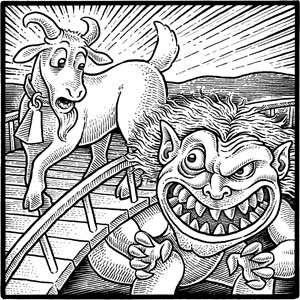Conversion disorder can quite readily be framed in terms of “betrayal.” Most immediately, there is the sense of the betrayal of one’s own body. Have you ever had one of those annoying eyelash twitching episodes that continue for days on end? When I try to imagine the frustration of Ms. Sanchez, I recall such episodes (and then multiply the frustration a thousandfold). When my eyelash starts twitching, it’s hard for me not to be a Cartesian, a substance dualist. “My twitching eyelash is bugging the shit out of me. I wish it would stop already!”
In such moments, the distinction between “the subject of enunciation” and “the subject of the statement” becomes fairly clear. The subject of enunciation is the res cogitans and the subject of the statement res extensa. This is not quite the distinction between my mind and my body. As DG put it, the subject of enunciation is the Cogito and the subject of the statement “the union of the soul and the body, or feeling, guaranteed in a complex way by the cogito.” Considering Cartesianism as a postsignifying phenomenon, DG conceive the necessary “double betrayal” as taking place between the Cogito and a possibly deceitful God or evil genius. The “absolute deterritorialization” of the Cogito is thus fueled by its “methodical doubt” in the reality of the outside world.
Insofar as “the union of soul and body” is distinct from the “I think,” it too belongs to the doubtable external world. The “I think” can never be sure it’s not just a brain in a vat or thing plugged into the Matrix. In conversion disorder, the primary betrayal must be assigned to the body-soul. But it’s not only a betrayal, it’s a usurpation! As Althusser pointed out in his ISA essay (which DG refer to in their treatment of subjectification), the term “subject” has always had two senses: the sense of sovereignity and the sense of servitude. We could also put this in terms of action and passion. A subject in the first sense is that which acts autonomously and a subject in the second sense is that which is helplessly acted upon. In normal circumstances, the Cogito considers itself sovereign over its body-soul; it considers the latter to be its subject. “Here, do this. Now, go over there. Embarrass yourself in the following manner…” But in eye-twitching and conversion disorder, the Cogito finds itself subjected to its subject. It finds itself betrayed and rendered utterly passive. And how easily the betrayal takes place! And how helpless the Cogito is to do anything about it! All it can do is wait until the body-soul grows weary of its autonomy and resumes its previous quietude.
Consciousness, stratified by subjectification at least, is already a couple. And as a couple, it takes for granted Masoch’s law that one of its components must serve as anvil to the other’s hammer.
Scanning several of the interviews Ms. Sanchez gave, I noted the following. When the interview took place at her home, she always led the interviewer over to a wall that displayed some paintings that I can only assume are her own. (“I was in art class. I was in two art classes!”) One can quickly grasp the significance of this repeated gesture. Look, that was me then, and this is me now. On the surface, the temporal division between a past plenitude and a present deprivation is clear-cut. But when she looks at those paintings, does she see in them signs of the later betrayal?
At least in the interviews, she refuses the diagnosis of conversion disorder. She did not betray herself. Something else did: some as yet unidentified pathogen, some biological or environmental agent. And insofar as the neurologists treating her insist otherwise, they are betraying her too. She has become absolutely deterritorialized. But the line remains a negative one. How to tilt it toward the BwO is the therapeutic question the schizoanalyst must ask.


